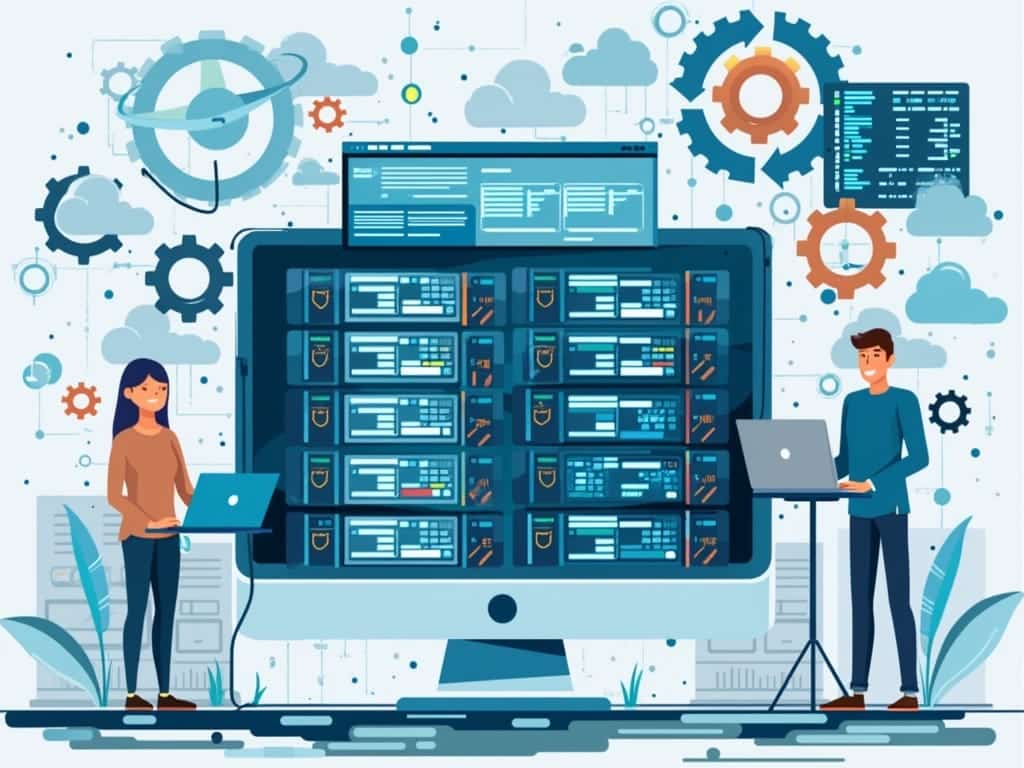Here’s my response with the text formatted in correct HTML:
Microsoft’s deadline for Exchange Server 2016 and 2019 support ends October 14, 2025, pushing organizations to make critical migration decisions. Your business must choose between moving to Exchange Online through Microsoft 365 or upgrading to the new Exchange Server SE. Each option matches different business needs, making careful evaluation essential.
Key Takeaways:
- Exchange Server 2016 and 2019 will lose critical security updates and technical support after October 14, 2025
- I recommend starting migration planning 12 months before the deadline to ensure a smooth transition
- Operating unsupported Exchange servers puts your system at risk through security gaps and can block incoming messages
- Exchange Online delivers cloud advantages with automatic updates, while Server SE lets you maintain direct control
- Your migration choice should align with your IT budget, regulatory obligations, and growth projections
The Final Countdown: Exchange Server 2016 and 2019 Support Ending October 2025
Critical Support Timeline Changes
Microsoft’s announcement sets a clear deadline for Exchange Server 2016 and 2019 – both versions will stop receiving support on October 14, 2025. Exchange 2019 has already hit its first milestone, reaching end of mainstream support on January 9, 2024. After October 2025, organizations still using these versions won’t receive essential updates.
Impact on Business Operations
These changes bring significant operational risks that need immediate attention. After the end date, servers will operate without:
- Technical support from Microsoft
- Security patches and bug fixes
- Time zone and daylight saving updates
- Protection against new cyber threats
- Compliance guarantee for regulatory requirements
I recommend starting migration planning at least 12 months before the deadline. This timeline allows for thorough testing, user training, and potential troubleshooting. The scale of your organization and complexity of your current Exchange setup will influence the required preparation time.
Migration options include moving to Exchange Online within Microsoft 365 or upgrading to newer on-premises versions once available. Each path needs careful evaluation based on your security requirements, budget constraints, and operational needs.
Acting early prevents rushed decisions and reduces the risk of security vulnerabilities that could emerge after support ends. Creating a detailed transition strategy now helps maintain business continuity throughout the migration process.

Critical Impact: What Happens If You Don’t Upgrade
Security Vulnerabilities and Communication Blocks
Outdated Exchange servers face severe operational consequences. Microsoft actively blocks inbound messages from servers running unsupported versions, limiting your ability to communicate with external contacts. Without regular security updates and patches, your server becomes increasingly exposed to cyber threats and potential data breaches.
Impact on Hybrid Environments
Organizations using hybrid setups with Microsoft 365 should pay close attention to upgrade notifications through the Microsoft 365 message center. These alerts serve as crucial reminders to maintain system compatibility. I’ve found that servers must stay within the latest or previous Cumulative Update versions to avoid communication restrictions. Here are the key risks of running outdated Exchange servers:
- Blocked inbound email communication
- Increased vulnerability to security threats
- Loss of technical support from Microsoft
- Compliance and regulatory issues
- Performance degradation
- Data synchronization problems in hybrid setups
- Limited access to new features and improvements
- Potential system crashes and data loss
By maintaining current Exchange server versions, you protect your organization from these significant operational disruptions while ensuring seamless communication flows. The cost of upgrading is minimal compared to the potential impact of system failure or security breach.
Your Migration Options: Exchange Online vs Server SE
Key Differences Between Options
Microsoft’s Exchange Server SE, set for release in Q3 2025, provides a direct upgrade path for organizations running Exchange 2019. This new version maintains on-premises control while adding modern security features. The transition can happen through an in-place upgrade, minimizing disruption to daily operations.
Exchange Online presents a cloud-based alternative that eliminates hardware maintenance and automatic updates. I recommend considering these specific factors before choosing your path:
- Infrastructure costs – Exchange Online removes the need for physical servers and reduces IT overhead
- Security management – Server SE lets you maintain complete control over security policies
- Compliance requirements – Some industries require data to stay on-premises, making Server SE the better choice
- Scalability needs – Online adjusts resources automatically while Server SE needs manual scaling
- Internet dependency – Server SE works without constant internet access
- Update control – On-premises allows precise control over update timing
Exchange Online integration with Microsoft 365 creates a unified communication platform, making it an appealing choice for businesses already using other Microsoft cloud services. For organizations needing strict data control or facing regulatory constraints, Server SE offers a modern on-premises solution with similar features to its cloud counterpart.
Both options provide viable paths forward, with the choice depending largely on your specific technical requirements and business goals.
Exchange 2016 to 2019 Transition: What You Need to Know
Key Migration Steps
Moving from Exchange 2016 to Exchange 2019 requires specific steps due to Microsoft’s direct upgrade limitations. I recommend setting up a fresh Exchange 2019 server environment before starting your migration. Unlike previous versions, you can’t perform an in-place upgrade between these versions.
Here’s the essential migration path to follow:
- Install Exchange 2019 on a new server while keeping Exchange 2016 running
- Set up necessary routing and networking configurations
- Move mailboxes from 2016 to 2019 servers in planned batches
- Test mail flow and access after each batch migration
- Remove Exchange 2016 server once all mailboxes are confirmed working
This process, while structured, helps maintain service continuity and reduces potential downtime during the transition.
Essential Update Practices for Exchange Server
Update Installation Strategy
I recommend installing the most recent Cumulative Updates (CUs) directly to your Exchange Server. Microsoft has simplified the process – you won’t need to install previous CUs before applying the latest version. This streamlined approach saves time while maintaining security and performance standards.
Pre-Update Safety Measures
Before starting any updates, these critical steps will protect your Exchange environment:
- Create full backups of Active Directory and Exchange Server databases
- Document all current customizations, including transport rules and third-party integrations
- Set up a test environment that mirrors your production setup
- Schedule updates during off-peak hours to minimize disruption
- Record current Exchange Server settings for quick reference
Testing in a non-production environment helps identify potential issues before they impact your live system. This practice lets you adjust configurations and resolve compatibility problems without risking your production environment.
The update process needs careful management – I always verify that services are running correctly after each update. By maintaining proper documentation and backups, you’ll have safety nets in place if issues arise. Remember to monitor server performance closely in the days following an update to catch any delayed complications.
Sources:
Microsoft Exchange Team Blog – “Exchange 2016 and 2019 reach end of support in October 2025”
Microsoft Learn – “Upgrade Exchange to the latest Cumulative Update”
Practical 365 – “Microsoft to Block Old Exchange Servers”
Microsoft Exchange Team Blog – “Exchange Server Subscription Edition: It’s happening in Q3 2025”
Microsoft Learn – Q&A: “Upgrade of Exchange Server 2016”
Related Posts

Network Upgrade Services: Enhance Your Business Connectivity
Network infrastructure forms the backbone of today’s businesses, with system failures costing organizations $5,600 per minute during outages. Slow networks cut employee efficiency by up

What is IaaS? Understanding Infrastructure as a Service
Infrastructure as a Service (IaaS) delivers virtualized computing resources through the internet, letting organizations pay only for the infrastructure they use. Leading providers Amazon Web

IT Setup for Startups: Essential Steps for Success
IT Setup for Startups: Essential Steps for Success A well-planned IT setup is crucial for startups aiming for long-term success. As companies grow, their IT
